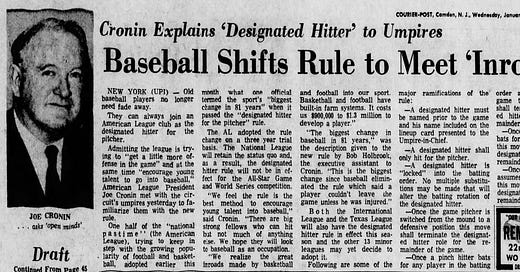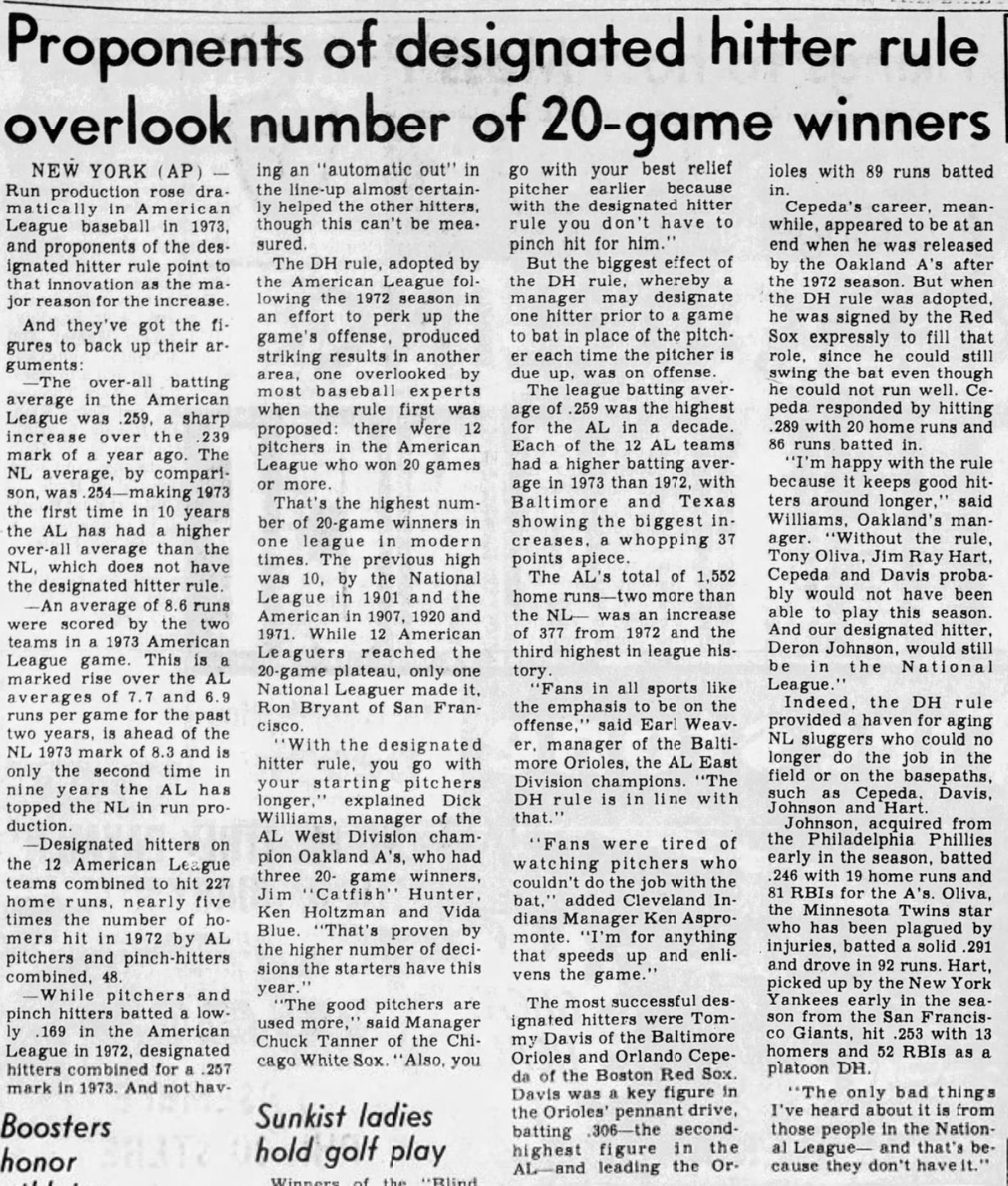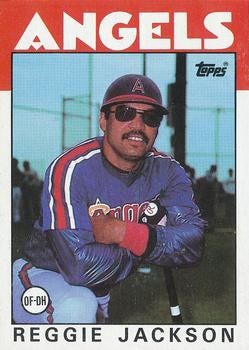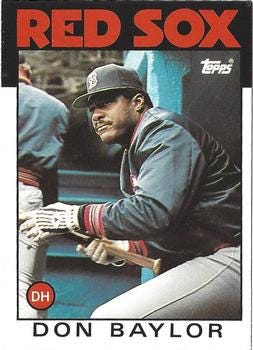What Happens When You Remove The DH
I’ve been replaying the 1986 postseason with Replay Baseball — but with a twist.
I don’t like the designated hitter. And I’m not going to use it this time around.
As some of you probably remember, the designated hitter was introduced in 1973 primarily to encourage offense in the American League. From the start, it was seen as a gimmick to encourage teams to hold on to older players who couldn’t field anymore:
The media reaction to the first year of the designated hitter is actually pretty interesting in hindsight. There were a number of articles like this that considered it to be a great boon to the American League:
And, in hindsight, it’s interesting to see the sort of statistics critics focused on in those days:
Unsurprisingly, Edgar Martinez was the first designated hitter to really turn the position into something more than a place to stick old guys who couldn’t fit in the field. Martinez suffered a number of severe injuries in 1993, and started drifting over towards being a full time designated hitter at the end of that season. By 1995, he was basically the full time designated hitter at the young age of 32.
Before Martinez, though, the designated hitter was generally handled by aging guys who really should have retired.
The 1986 California Angels, for example, had Reggie Jackson as the DH against righties.
Jackson started in right field on April 27 and May 7 that season, but that was it. Most sims will give him fielding ratings to allow him to play in the field, though it would be pretty unrealistic to keep him in the game for all 9 innings. He was replaced in the outfield in the 8th inning of both games.
The 1986 Boston Red Sox are similar. Don Baylor was the Red Sox designated hitter for almost the entire season, with the exception of a handful of games when Bill Buckner stayed off the field.
But what would happen if we just forced the pitchers to hit?
It would certainly cause the Angels manager to have to think of a solution. Jackson would certainly be a nice pinch hitter, but there’s also a chance that you might want to start him in either right field or left field. Brian Downing had a better offensive year, though Ruppert Jones had somewhat similar production to Jackson offensively.
Baylor, meanwhile, played first base a few times during the regular season, though he obviously isn’t exactly a great replacement for Bill Buckner. Neither Jim Rice nor Dwight Evans played at all in center field in 1986; the prospects of shifting one of them over to make room for Baylor at a corner outfield position in place of Tony Armas kind of depends on the game you play. If you play APBA, which only has generic outfield ratings, it’s no problem. Play a different game, though, and it can be more tricky.
And, of course, you also have to weigh starting Don Baylor in the field against starting Dave Henderson, who became the starting center fielder in game 6 of the ALCS and held on to the job through the end of the postseason. This was after Armas was injured in game 5, leading the way to Henderson’s famous heroics:
Anyway, as you can see, the simple act of getting rid of the designated hitter means you have to make all sorts of interesting strategic decisions. I highly recommend giving it a try.












As a kid, I always used the DH for both leagues, but now I enjoy my replays better when pitchers have to hit. It adds more depth and just makes sense.
I still don't fully grasp the whole DH rule argument. I want the DH. I don't want to see a pitcher strikeout or ground weakly to an infielder. Yes, it is dramatic when that rare good-hitting pitcher doubles in the winning run for himself, but that is rare. As for the late-inning strategy of double-switching and stuff, I would rather save my pencil lead.
For me, the DH rule adds simplicity to the game, especially during a replay.
Enjoyed the read, though. :)